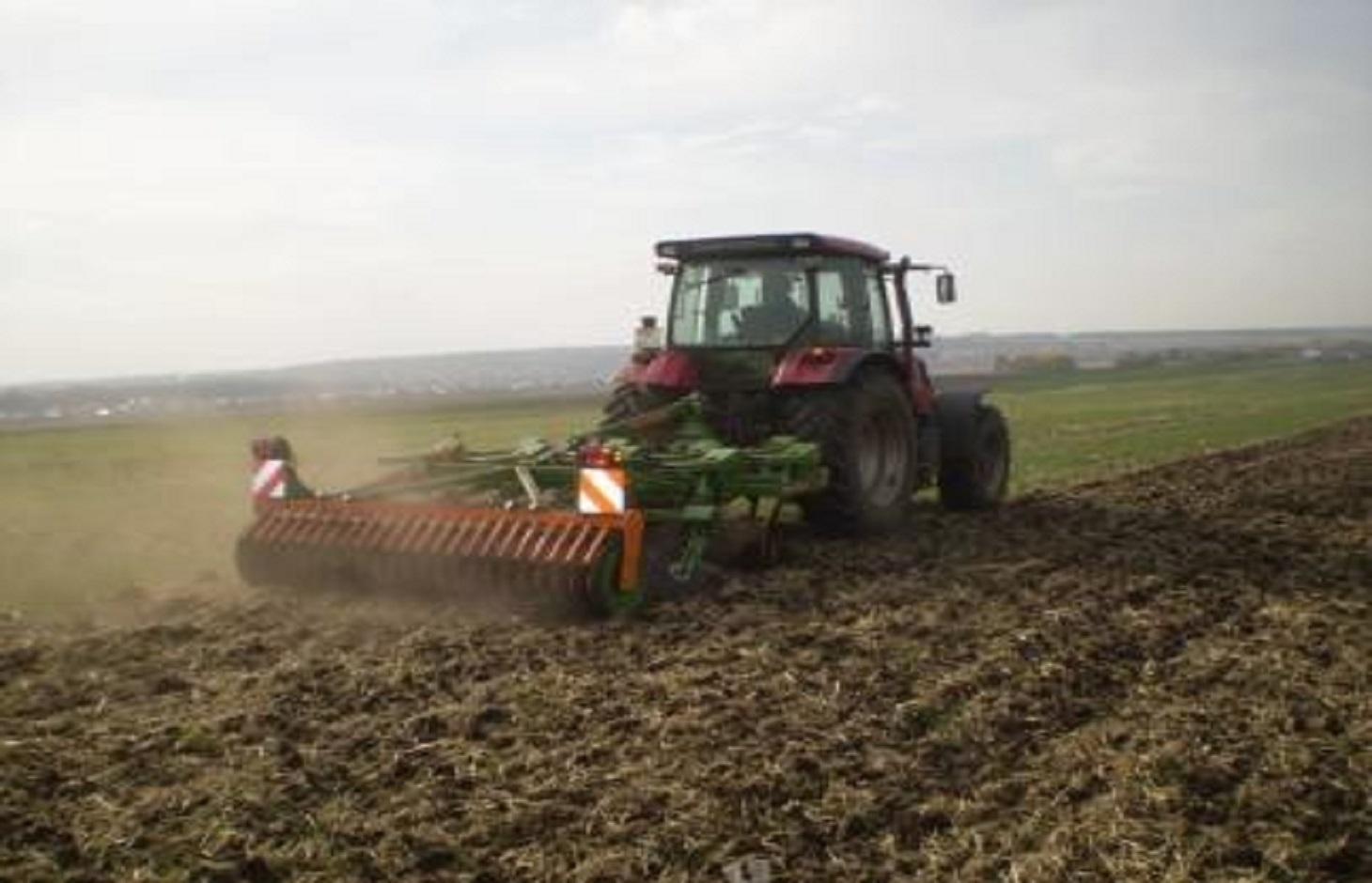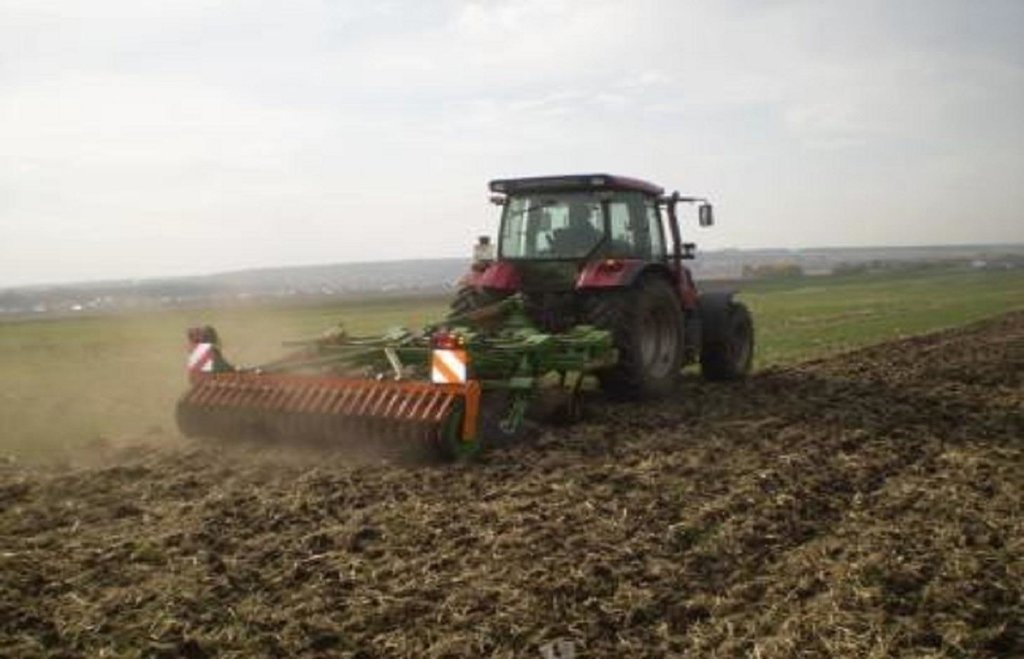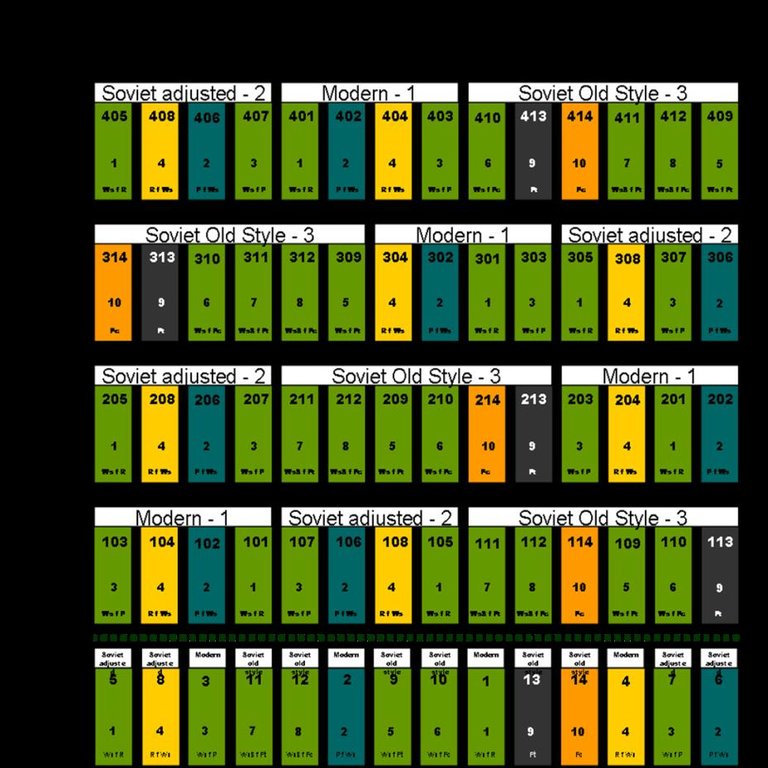Minimum Tillage [ຣັດຊຽນ ເຟເດີເຣເຊີນ]
- ການສ້າງ:
- ປັບປູງ:
- ຜູ້ສັງລວມຂໍ້ມູນ: Peter Liebelt
- ບັນນາທິການ: –
- ຜູ້ທົບທວນຄືນ: Alexandra Gavilano, Deborah Niggli, David Streiff
Минимальная обработка
technologies_1315 - ຣັດຊຽນ ເຟເດີເຣເຊີນ
ເບິ່ງພາກສ່ວນ
ຂະຫຍາຍທັງໝົດ ຍຸບທັງໝົດ1. ຂໍ້ມູນທົ່ວໄປ
1.2 ຂໍ້ມູນ ການຕິດຕໍ່ພົວພັນ ຂອງບຸກຄົນທີ່ສໍາຄັນ ແລະ ສະຖາບັນ ທີ່ມີສ່ວນຮ່ວມ ໃນການປະເມີນເອກກະສານ ເຕັກໂນໂລຢີ
ຊື່ໂຄງການ ທີ່ອໍານວຍຄວາມສະດວກ ໃນການສ້າງເອກກະສານ/ປະເມີນ ເຕັກໂນໂລຢີ (ຖ້າກ່ຽວຂ້ອງ)
Book project: Making sense of research for sustainable land management (GLUES)ຊື່ໂຄງການ ທີ່ອໍານວຍຄວາມສະດວກ ໃນການສ້າງເອກກະສານ/ປະເມີນ ເຕັກໂນໂລຢີ (ຖ້າກ່ຽວຂ້ອງ)
Sustainable land management in the Russian steppes (KULUNDA / GLUES)1.3 ເງື່ອນໄຂ ກ່ຽວກັບ ການນໍາໃຊ້ຂໍ້ມູນເອກະສານ ທີ່ສ້າງຂື້ນ ໂດຍຜ່ານ ອົງການພາບລວມຂອງໂລກ ທາງດ້ານແນວທາງ ແລະ ເຕັກໂນໂລຢີ ຂອງການອານຸລັກ ທໍາມະຊາດ (WOCAT)
ຜູ້ປ້ອນຂໍ້ມູນ ແລະ ບຸກຄົນສຳຄັນ ທີ່ໃຫ້ຂໍ້ມູນ (ຫຼາຍ) ຍິນຍອມ ຕາມເງື່ອນໄຂ ໃນການນຳໃຊ້ຂໍ້ມູນ ເພື່ອສ້າງເປັນເອກກະສານຂອງ WOCAT:
ແມ່ນ
1.4 ແຈ້ງການວ່າ ດ້ວຍຄວາມຍືນຍົງຂອງ ເຕັກໂນໂລຢີ
ການນໍາໃຊ້ ເຕັກໂນໂລຢີ ດັ່ງກ່າວໄດ້ອະທິບາຍ ເຖິງບັນຫາ ກ່ຽວກັບ ການເຊື່ອມໂຊມຂອງດິນບໍ? ຖ້າບໍ່ດັ່ງນັ້ນ ມັນບໍ່ສາມາດ ຢັ້ງຢືນໄດ້ວ່າ ເປັນເຕັກໂນໂລຊີ ໃນການຄຸ້ມຄອງ ທີ່ດິນແບບຍືນຍົງ? :
ບໍ່ແມ່ນ
1.5 ແບບສອບຖາມທີ່ອ້າງອີງເຖີງແນວທາງ ການຄຸ້ມຄອງທີ່ດິນແບບຍືນຍົງ (ໄດ້ເຮັດເປັນເອກະສານທີ່ໃຊ້ WOCAT)
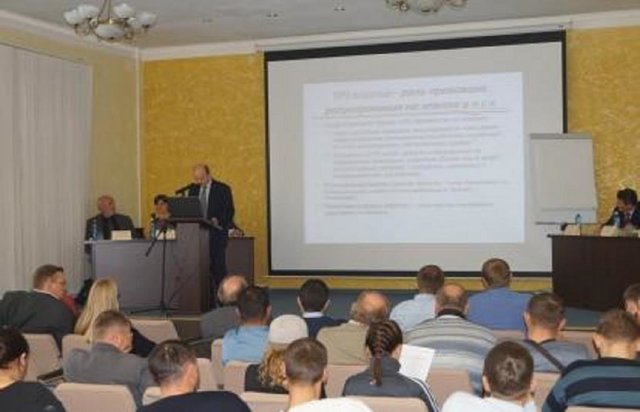
Vocational Training [ຣັດຊຽນ ເຟເດີເຣເຊີນ]
Regular in-service training of land use specialists and farm managers in the fields of sustainable land use management, and monitoring in the agrarian sector.
- ຜູ້ສັງລວມຂໍ້ມູນ: Peter Liebelt
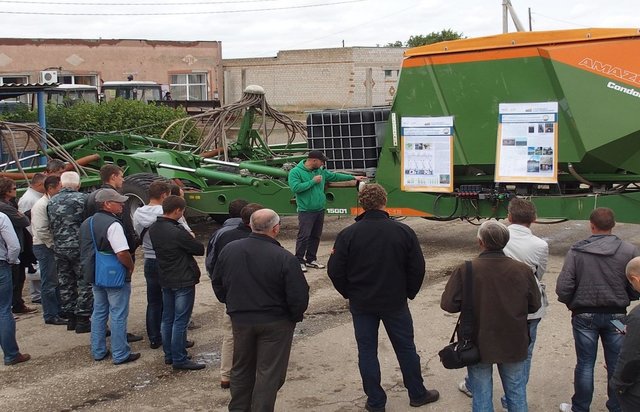
Field days [ຣັດຊຽນ ເຟເດີເຣເຊີນ]
Field days are events for regional stakeholders, mainly farmers in the study area, to discuss their demands regarding scientific help, and to be informed about the activities and results of new methods and technologies for conservation agriculture.
- ຜູ້ສັງລວມຂໍ້ມູນ: Peter Liebelt
2. ການອະທິບາຍ ເຕັກໂນໂລຢີ ຂອງການຄຸ້ມຄອງ ທີ່ດິນແບບຍືນຍົງ
2.1 ຄໍາອະທິບາຍສັ້ນຂອງ ເຕັກໂນໂລຢີ
ການກຳໜົດຄວາມໝາຍ ຂອງເຕັກໂນໂລຢີ:
Minimum tillage is a one-pass operation combined with sowing, using a classic Russian seeder modified for seedbed preparation and soil mixing. It can include shallow stubble cultivation after harvesting.
2.2 ການອະທິບາຍ ລາຍລະອຽດ ຂອງເຕັກໂນໂລຢີ
ການພັນລະນາ:
Minimum tillage is a key element of the "adapted Soviet cropping system", which aims at more sustainable land use but based on predominantly local technologies. For successful implementation of minimum tillage, adaption of the whole cropping system is required, including crop rotation. Rotation includes a succession of cereal crops (e.g. spring wheat), legumes (peas), and oil seed crops. Stubble cultivation in autumn is best performed with the "Catros" compact disc harrow for a quick, shallow operation. Seedbed preparation is carried out using a classic Russian seeder modified with wing shares for shallow seedbed preparation including soil mixing. In general, the performance of this drill is very close to that of a cultivator.
Minimizing tillage, saves time and fuel, and also helps to reduce evaporation, as well as protecting the soil against erosion. Shallow tillage with disc harrows after harvest ensures better stubble mixing and stimulates the germination of weed seeds. The adapted seeder, SZS 2.1, works with wing shares that open the soil and place the seed. Thus traditional deep tillage operations for the preparation of the seedbed can are omitted: that helps to reduce costs. With respect to crop protection, the first and most important element is to implement a full crop rotation. To control late germinating weeds and seeds of the previous crop, a disc harrow is used for shallow cultivation – this can be supplemented by the application of a non-selective herbicide if there is germination - to avoid the risk of flowering before the hard frost sets in. Fertilization becomes more important, because of the decreased mineralization rate under minimized soil tillage, especially at the beginning of the conversion of the cropping system.
The Technology including crop rotation was tested in the field in 4 test plots with 4 repetitions at the test site in Poluyamki. Results showed that the intensity of soil tillage and seeding methods used had a great influence on crop establishment and expected yields. It was demonstrated that minimizing tillage leads to higher water use efficiency and highest yields. Positive effects were also observed regarding soil structure and soil fertility already after 3 years. Minimized soil disturbance led to higher aggregate stability, which leads to a lower risk of wind erosion, increased soil organic carbon storage and soil fertility as well as available soil water content. The adapted Soviet system is more profitable, due to higher gross margins.
The test site in Poluyamki is located in the dry steppe of the border region next to Kazakhstan, where, due to the climatic conditions, no natural afforestation occurs, and the planted windbreaks don’t grow vigorously due to the prevailing aridity. The annual precipitation is under 300 mm a year. Probably the greatest climatic influence factor is the precipitation - in terms of quantity and space/ time distribution and, due to high summer temperatures, the high rates of evapotranspiration. The total yearly precipitation rate is the primary yield-limiting factor in all steppe regions. The ratio between precipitation and evaporation is negative. In the late weeks of spring, prolonged droughts must be expected in 5-year cycles, limiting germination and crop establishment. The soils are classed among those of cool-tempered grasslands. Due to their physical and chemical characteristics, these soils (Chernozems and Kastanozems) have high agronomic potential.
2.3 ຮູບພາບຂອງເຕັກໂນໂລຢີ
2.5 ປະເທດ / ເຂດ / ສະຖານທີ່ບ່ອນທີ່ ເຕັກໂນໂລຢີ ໄດ້ຮັບການນໍາໃຊ້ ແລະ ທີ່ຖືກປົກຄຸມດ້ວຍການປະເມີນຜົນ
ປະເທດ:
ຣັດຊຽນ ເຟເດີເຣເຊີນ
ພາກພື້ນ / ລັດ / ແຂວງ:
Russian Federation/Altai Krai
ຂໍ້ມູນເພີ່ມເຕີມຂອງສະຖານທີ່:
Mikhaylovski district (Pavlovski district, Mamontovski district)
ໃຫ້ລະບຸ ການແຜ່ຂະຫຍາຍ ເຕັກໂນໂລຢີ:
- ແຜ່ຂະຫຍາຍຢ່າງໄວວາໃນພື້ນທີ່
ຖ້າຫາກວ່າເຕັກໂນໂລຢີ ໄດ້ກະຈາຍໄປທົ່ວພື້ນທີ່, ໃຫ້ລະບຸເນື້ອທີ່ ທີ່ຖືກປົກຄຸມ (ເປັນ ກິໂລຕາແມັດ):
0.13
ຖ້າຫາກບໍ່ຮູ້ເນື້ອທີ່ທີ່ແນ່ນອນ, ໃຫ້ລະບຸ ເນື້ອທີ່ໂດຍປະມານ ທີ່ໃກ້ຄຽງ:
- 0.1-1 ກມ 2
ຄວາມຄິດເຫັນ:
Boundary points of the Technology area: Centre latitude: _52° 4'3.00"N Centre longitude: 79°54'26.16"E Test site Poluyamki
Total area covered by the SLM Technology is 0.13 km2.
The total investigation area of the SLM Technology “Minimum Tillage” refers to the test site areas: 1. Poluyamki, Mikhaylovskiy Rayon: 13ha ; 2. Pervomayskiy, Mamontovskiy Rayon: 10ha and 3. Komsomolskiy, Pavlovskiy Rayon: 3ha all managed by Minimum Tillage. This questionnaire is related to the test site in Poluyamki, Mikhaylovskiy Rayon
Map
×2.6 ວັນທີໃນການຈັດຕັ້ງປະຕິບັດ
ຖ້າຫາກວ່າ ບໍ່ຮູ້ຈັກ ປີທີ່ຊັດເຈນ ແມ່ນໃຫ້ປະມານ ວັນທີເອົາ:
- ຕໍ່າກວ່າ 10 ປີ ຜ່ານມາ (ມາເຖິງປະຈຸບັນ)
2.7 ການນໍາສະເໜີ ເຕັກໂນໂລຢີ
ໃຫ້ລະບຸ ເຕັກໂນໂລຢີ ໄດ້ຖືກຈັດຕັ້ງປະຕິບັດຄືແນວໃດ?
- ໃນໄລຍະການທົດລອງ / ການຄົ້ນຄວ້າ
ຄວາມຄິດເຫັນ (ປະເພດ ໂຄງການ ແລະ ອື່ນໆ):
Already during the Soviet land use periode temporal,especially after the Virgin land campagne (1954-'63)efforts were made to minimize soil tillage intensity to obtain from conventional ploughing system. An important scientific thinker for this innovative farming systems was T. C. Malcev. But at this time the new approaches for minimized tillage systems were not seriously implemented in Russia. Only in the last decade a significant trend towards minimum soil tillage can be recodnized in the Russian agriculture
3. ການໃຈ້ແຍກ ເຕັກໂນໂລຢີ ໃນການຄຸ້ມຄອງ ດິນແບບຍືນຍົງ
3.1 ຈຸດປະສົງຫຼັກ (ຫຼາຍ) ຂອງເຕັກໂນໂລຢີ
- ປັບປຸງ ການຜະລິດ
- ຫຼຸດຜ່ອນ, ປ້ອງກັນ, ຟື້ນຟູ ການເຊື່ອມໂຊມຂອງດິນ
3.2 ປະເພດການນໍາໃຊ້ທີ່ດິນ ໃນປະຈຸບັນ() ທີ່ເຕັກໂນໂລຢີ ໄດ້ຖືກນໍາໃຊ້

ດິນທີ່ປູກພືດ
- ການປູກພືດປະຈໍາປີ
ຈໍານວນ ລະດູການ ປູກໃນປີໜຶ່ງ:
- 1
ລະບຸ ຊະນິດ:
Longest growing period in days: 110, Longest growing period from month to month: May-October
ຄວາມຄິດເຫັນ:
Major land use problems (compiler’s opinion): The decrease of soil organic carbon content in the soils and loss of topsoil depth has led to a decrease in soil fertility. Additionally, the negative soil water balance due to the high summer temperatures and evaporation, and the high spatial and temporal variability of precipitation, is a serious problem relating to the lack of soil water.
Major land use problems (land users’ perception): The land users who were involved in the studies and implemented the new farming practices have a similar opinion. But there are still a lot of farmers that underestimate the ecological risks of soil degradation resulting from conventional/ traditional soil management.
3.4 ການສະໜອງນ້ຳ
ການສະໜອງນໍ້າ ໃນພື້ນທີ່ ທີ່ໄດ້ນໍາໃຊ້ ເຕັກໂນໂລຢີ:
- ນໍ້າຝົນ
3.5 ການນໍາໃຊ້ເຕັກໂນໂລຢີ ທີ່ຢູ່ໃນກຸ່ມການຄຸ້ມຄອງ ທີ່ດິນແບບຍືນຍົງ
- ການຫຼຸດຜ່ອນ ກິດຈະກໍາ ທີ່ລົບກວນດິນ
3.6 ມາດຕະການ ການຄຸ້ມຄອງ ທີ່ດິນແບບຍືນຍົງ ປະກອບດ້ວຍ ເຕັກໂນໂລຢີ

ມາດຕະການ ທາງການກະສິກໍາ
- A1: ພືດ / ການປົກຫຸ້ມຂອງດິນ
- A2: ອິນຊີວັດຖຸ ຫຼື ຄວາມອຸດົມສົມບູນໃນດິນ
- A3: ການບໍາລຸງຮັກສາຊັ້ນໜ້າດິນ
A3: ລະບົບການໄຖແຕກຕ່າງກັນ:
A 3.2: Reduced tillage (> 30% soil cover)

ມາດຕະການ ທາງດ້ານການຄຸ້ມຄອງ
- M2: ການປ່ຽນແປງ ການຈັດການຄຸ້ມຄອງ / ລະດັບຄວາມໜາແໜ້ນ
ຄວາມຄິດເຫັນ:
Type of agronomic measures: better crop cover, mulching, green manure, mineral (inorganic) fertilizers, rotations / fallows, minimum tillage, non-inversion tillage
3.7 ປະເພດດິນເຊື່ອມໂຊມ ຫຼັກທີ່ໄດ້ນໍາໃຊ້ ເຕັກໂນໂລຢີ

ດິນເຊາະເຈື່ອນ ໂດຍນໍ້າ
- Wt: ການສູນເສຍຊັ້ນໜ້າດິນ / ການເຊາະເຈື່ອນຜິວໜ້າດິນ

ດິນເຊາະເຈື່ອນ ໂດຍລົມ
- ການສູນເສຍຊັ້ນໜ້າດິນ
- Ed: ການສູນເສຍຈາກລົມ ແລະ ການທັບຖົມ
- Eo: ຜົນກະທົບຈາກການເຊື່ອມໂຊມທາງອ້ອມ

ການເຊື່ອມໂຊມ ຂອງດິນ ທາງເຄມີ
- Cn: ຄວາມອຸດົມສົມບູນ ລົດໜ້ອຍຖອຍລົງ ແລະ ສານອິນຊີວັດຖຸລົດລົງ (ບໍ່ແມ່ນສາເຫດມາຈາກການເຊາະເຈື່ອນ)

ການເຊື່ອມໂຊມ ຂອງດິນ ທາງກາຍະພາບ
- Pc: ການອັດແໜ້ນ
ຄວາມຄິດເຫັນ:
Main causes of degradation: soil management (Conventional (intensive) soil tillage by phloughing), crop management (annual, perennial, tree/shrub) (Bare fallow (without any vegetation cover)), wind storms / dust storms (Strong wind and storm (local name: Sukhovey) from the south-western central-Asiatic semi-desert regions cause a higher risk of wind erosion especially on traditional cropland without plant cover), droughts (The frequently occurring early-summer drought periods are particularly problematic for agricultural production)
Secondary causes of degradation: education, access to knowledge and support services (The linkages between research, education, extension services and end users need to strengthened, for better knowledge creation and transfer. Need for more efficient and qualified advisory service), Capital for investments (Lack of capital for investment in modern adapted agricultural technologies)
3.8 ການປ້ອງກັນ, ການຫຼຸດຜ່ອນ, ຫຼືການຟື້ນຟູຂອງການເຊື່ອມໂຊມຂອງດິນ
ໃຫ້ລະບຸ ເປົ້າໝາຍ ເຕັກໂນໂລຢີ ທີ່ພົວພັນ ກັບຄວາມເຊື່ອມໂຊມຂອງດິນ:
- ປ້ອງກັນການເຊື່ອມໂຊມຂອງດິນ
- ຫຼຸດຜ່ອນການເຊື່ອມໂຊມຂອງດິນ
4. ຂໍ້ກໍາໜົດ, ກິດຈະກໍາການປະຕິບັດ, ວັດຖຸດິບ, ແລະຄ່າໃຊ້ຈ່າຍ
4.1 ເຕັກນິກ ໃນການແຕ້ມແຜນວາດ ເຕັກໂນໂລຢີ
ຄຸນລັກສະນະ ຂອງເຕັກນິກ (ທີ່ກ່ຽວຂ້ອງ ກັບການແຕ້ມແຜນວາດ ທາງດ້ານເຕັກນີກ):
Soviet Seeder SZS 2.1 with wing shares for shallow soil mixing and seed bed preparation.
Location: Poluyamki. Altai Krai
Date: 20.05.2015
Technical knowledge required for field staff / advisors: high
Technical knowledge required for land users: high
Main technical functions: improvement of topsoil structure (compaction), increase in organic matter, increase of infiltration, increase / maintain water stored in soil, sediment retention / trapping, sediment harvesting
Secondary technical functions: control of raindrop splash, control of dispersed runoff: retain / trap, control of dispersed runoff: impede / retard, control of concentrated runoff: retain / trap, control of concentrated runoff: impede / retard, improvement of surface structure (crusting, sealing), improvement of subsoil structure (hardpan), stabilisation of soil (eg by tree roots against land slides), increase in nutrient availability (supply, recycling,…), reduction in wind speed, increase of biomass (quantity)
Better crop cover
Material/ species: Crop rotation without bare fallow
Mulching
Material/ species: stubble cultivation with disc harrow or harrow weeder
Quantity/ density: 1/year
Green manure
Material/ species: pea
Mineral (inorganic) fertilizers
Material/ species: fertilization with calcium ammonium nitrate
Quantity/ density: yearly
Remarks: (100kg/ha (spring wheat and rape), 50kg (pea)
Rotations / fallows
Material/ species: wheat-pea-wheat-raps
Minimum tillage
Material/ species: Catros (disc harrow) and Seeder СЗС2.1 (wing shares)
Remarks: Catros (depth: 10 cm) after harvest (autumn) and Seeder in May)
Non-inversion tillage
Material/ species: Catros (disc harrow) and Seeder СЗС2.1 (wing shares)
Remarks: Catros (depth: 10 cm) after harvest (autumn) and Seeder in May)
ຜູ້ຂຽນ:
Lars-Christian Grunwald
4.5 ບໍາລຸງຮັກສາ / ແຜນຈັດຕັ້ງປະຕິບັດ ກິດຈະກໍາ
| ກິດຈະກໍາ | ໄລຍະເວລາ / ຄວາມຖີ່ | |
|---|---|---|
| 1. | Stubble cultivation | september |
| 2. | Seeding | late april/early may |
| 3. | Seeding (extension) | |
| 4. | Pest management | period of vegetation |
| 5. | Pest management (extension) | |
| 6. | Harvest | september |
4.6 ຄ່າໃຊ້ຈ່າຍ ແລະ ປັດໄຈນໍາເຂົ້າທີ່ຈໍາເປັນສໍາລັບການບໍາລຸງຮັກສາກິດຈະກໍາ / ແຜນປະຕິບັດ (ຕໍ່ປີ)
| ລະບຸ ປັດໃຈ ນໍາເຂົ້າ ໃນການຜະລີດ | ຫົວໜ່ວຍ | ປະລິມານ | ຕົ້ນທຶນ ຕໍ່ຫົວໜ່ວຍ | ຕົ້ນທຶນທັງໝົດ ຂອງປັດໃຈຂາເຂົ້າ ໃນການຜະລິດ | % ຂອງຕົ້ນທຶນທັງໝົດ ທີ່ຜູ້ນໍາໃຊ້ທີ່ດິນ ໃຊ້ຈ່າຍເອງ | |
|---|---|---|---|---|---|---|
| ແຮງງານ | labour | ha | 1.0 | 4.34 | 4.34 | 100.0 |
| ອຸປະກອນ | machine use | ha | 1.0 | 37.4 | 37.4 | 100.0 |
| ອຸປະກອນ | fuel | ha | 1.0 | 47.34 | 47.34 | 100.0 |
| ວັດສະດຸໃນການປູກ | seeds | ha | 1.0 | 25.3 | 25.3 | 100.0 |
| ຝຸ່ນ ແລະ ຢາຊີວະພາບ | fertilizer | ha | 1.0 | 30.83 | 30.83 | 100.0 |
| ຝຸ່ນ ແລະ ຢາຊີວະພາບ | pesticides | ha | 1.0 | 9.42 | 9.42 | 100.0 |
| ຕົ້ນທຶນທັງໝົດ ທີ່ໃຊ້ໃນການບໍາລຸງຮັກສາ ເຕັກໂນໂລຢີ | 154.63 | |||||
| ຄ່າໃຊ້ຈ່າຍທັງໝົດ ສຳລັບການບົວລະບັດຮກສາເຕັກໂນໂລຢີ ເປັນສະກຸນເງີນໂດລາ | 154.63 | |||||
ຄວາມຄິດເຫັນ:
The costs refers to 1ha land of the test field in Poluyamki.
4.7 ປັດໄຈ ທີ່ສໍາຄັນ ທີ່ສົ່ງຜົນກະທົບ ຕໍ່ຄ່າໃຊ້ຈ່າຍ
ໃຫ້ອະທິບາຍ ປັດໃຈ ທີ່ສົ່ງຜົນກະທົບ ຕໍ່ຕົ້ນທຶນ ໃນການຈັດຕັ້ງປະຕິບັດ:
The highest cost factors of minimum tillage are equipment, fuel, fertilizer and seeds. Compared to the conventional deep ploughing often without fertilizer application, fertilizer and pesticides are the main additional cost factors.
5. ສະພາບແວດລ້ອມທໍາມະຊາດ ແລະ ມະນຸດ
5.1 ອາກາດ
ປະລິມານນໍ້າຝົນປະຈໍາປີ
- < 250 ມີລິແມັດ
- 251-500 ມີລິແມັດ
- 501-750 ມີລິແມັດ
- 751-1,000 ມີລິແມັດ
- 1,001-1,500 ມີລິແມັດ
- 1,501-2,000 ມີລິແມັດ
- 2,001-3,000 ມີລິແມັດ
- 3,001-4,000 ມີລິແມັດ
- > 4,000 ມີລິແມັດ
ເຂດສະພາບອາກາດກະສິກໍາ
- ເຄິ່ງແຫ້ງແລ້ງ
Thermal climate class: temperate
5.2 ພູມິປະເທດ
ຄ່າສະເລ່ຍ ຄວາມຄ້ອຍຊັນ:
- ພື້ນທີ່ຮາບພຽງ (0-2%)
- ອ່ອນ (3-5 %)
- ປານກາງ (6-10 %)
- ມ້ວນ (11-15 %)
- ເນີນ(16-30%)
- ໍຊັນ (31-60%)
- ຊັນຫຼາຍ (>60%)
ຮູບແບບຂອງດິນ:
- ພູພຽງ / ທົ່ງພຽງ
- ສັນພູ
- ເປີ້ນພູ
- ເນີນພູ
- ຕີນພູ
- ຮ່ອມພູ
ເຂດລະດັບສູງ:
- 0-100 ແມັດ a.s.l.
- 101-500 ແມັດ a.s.l.
- 501-1,000 ແມັດ a.s.l.
- 1,001-1,500 ແມັດ a.s.l.
- 1,501-2,000 ແມັດ a.s.l.
- 2,001-2,500 ແມັດ a.s.l.
- 2,501-3,000 ແມັດ a.s.l.
- 3,001-4,000 ແມັດ a.s.l.
- > 4,000 ແມັດ a.s.l.
5.3 ດິນ
ຄວາມເລິກ ຂອງດິນສະເລ່ຍ:
- ຕື້ນຫຼາຍ (0-20 ຊັງຕີແມັດ)
- ຕື້ນ (21-50 ຊຕມ)
- ເລີກປານກາງ (51-80 ຊຕມ)
- ເລິກ (81-120 ຊມ)
- ເລິກຫຼາຍ (> 120 cm)
ເນື້ອດິນ (ໜ້າດິນ):
- ປານກາງ (ດິນໜຽວ, ດິນໂຄນ)
ຊັ້ນອິນຊີວັດຖຸ ເທິງໜ້າດິນ:
- ປານກາງ (1-3 %)
5.4 ມີນໍ້າ ແລະ ຄຸນນະພາບ
ລະດັບ ນໍ້າໃຕ້ດິນ:
5-50 ແມັດ
5.6 ຄຸນລັກສະນະ ຂອງຜູ້ນໍາໃຊ້ທີ່ດິນ ທີ່ໄດ້ນໍາໃຊ້ເຕັກໂນໂລຢີ
ລະບົບ ການຕະຫຼາດ ແລະ ຜົນຜະລິດ:
- ການຄ້າ / ຕະຫຼາດ
ລາຍຮັບ ທີ່ບໍ່ໄດ້ມາຈາກ ການຜະລິດ ກະສິກໍາ:
- ໜ້ອຍກ່ວາ 10 % ຂອງລາຍຮັບທັງໝົດ
ລະດັບຄວາມຮັ່ງມີ:
- ສະເລ່ຍ
- ຮັ່ງມີຫຼາຍ
ບຸກຄົນ ຫຼື ກຸ່ມ:
- ການຈ້າງງານ (ບໍລິສັດ, ອົງການ ລັດຖະບານ)
ລະດັບ ການຫັນເປັນກົນຈັກ:
- ເຄື່ອງກົນຈັກ
ເພດ:
- ຜູ້ຊາຍ
ໃຫ້ລະບຸ ຄຸນລັກສະນະ ຂອງຜູ້ນໍາໃຊ້ທີ່ດິນ:
Land users applying the Technology are mainly Leaders / privileged
There are generally less woman than men in rural regions caused by rural-urban migration. Furthermore, jobs in the agricultural sector are not so attractive for woman.
Population density: 10-50 persons/km2
Annual population growth: negative
5.7 ເນື້ອທີ່ສະເລ່ຍຂອງດິນ ທີ່ຜູ້ນຳໃຊ້ທີ່ດິນ ໃຊ້ເຮັດເຕັກໂນໂລຢີ
- <0.5 ເຮັກຕາ
- 0.5-1 ເຮັກຕາ
- 1-2 ເຮັກຕາ
- 2-5 ເຮັກຕາ
- 5-15 ເຮັກຕາ
- 15-50 ເຮັກຕາ
- 50-100 ເຮັກຕາ
- 100-500 ເຮັກຕາ
- 500-1,000 ເຮັກຕາ
- 1,000-10,000 ເຮັກຕາ
- > 10,000 ເຮັກຕາ
ຖືໄດ້ວ່າ ເປັນຂະໜາດນ້ອຍ, ກາງ ຫຼື ໃຫຍ່ (ອີງຕາມເງື່ອນໄຂ ສະພາບຄວາມເປັນຈິງ ຂອງທ້ອງຖີ່ນ)? :
- ຂະໜາດໃຫຍ່
5.8 ເຈົ້າຂອງທີ່ດິນ, ສິດໃຊ້ທີ່ດິນ, ແລະ ສິດທິການນໍາໃຊ້ນໍ້າ
ເຈົ້າຂອງດິນ:
- ລັດ
- ບຸກຄົນ, ບໍ່ມີຕໍາແໜ່ງ
ສິດທິ ໃນການນໍາໃຊ້ທີ່ດິນ:
- ຊຸມຊົນ (ທີ່ມີການຈັດຕັ້ງ)
- ເຊົ່າ
ສິດທິ ໃນການນໍາໃຊ້ນໍ້າ:
- ເປີດກວ້າງ (ບໍ່ມີການຈັດຕັ້ງ)
ຄວາມຄິດເຫັນ:
state: 45%, the data refer to the Altai Krai
5.9 ການເຂົ້າເຖິງການບໍລິການ ແລະ ພື້ນຖານໂຄງລ່າງ
ສຸຂະພາບ:
- ທຸກຍາກ
- ປານກາງ
- ດີ
ການສຶກສາ:
- ທຸກຍາກ
- ປານກາງ
- ດີ
ການຊ່ວຍເຫຼືອ ດ້ານວິຊາການ:
- ທຸກຍາກ
- ປານກາງ
- ດີ
ການຈ້າງງານ (ຕົວຢ່າງ, ການເຮັດກິດຈະກໍາອື່ນ ທີ່ບໍ່ແມ່ນ ການຜະລິດກະສິກໍາ):
- ທຸກຍາກ
- ປານກາງ
- ດີ
ຕະຫຼາດ:
- ທຸກຍາກ
- ປານກາງ
- ດີ
ພະລັງງານ:
- ທຸກຍາກ
- ປານກາງ
- ດີ
ຖະໜົນຫົນທາງ ແລະ ການຂົນສົ່ງ:
- ທຸກຍາກ
- ປານກາງ
- ດີ
ການດື່ມນໍ້າ ແລະ ສຸຂາພິບານ:
- ທຸກຍາກ
- ປານກາງ
- ດີ
ການບໍລິການ ທາງດ້ານການເງິນ:
- ທຸກຍາກ
- ປານກາງ
- ດີ
6. ຜົນກະທົບ ແລະ ລາຍງານສະຫຼຸບ
6.1 ການສະແດງຜົນກະທົບ ພາຍໃນພື້ນທີ່ ທີ່ໄດ້ຈັດຕັ້ງປະຕິບັດ ເຕັກໂນໂລຢີ
ຜົນກະທົບທາງເສດຖະກິດສັງຄົມ
ການຜະລິດ
ການຜະລິດພືດ
ຄວາມຄິດເຫັນ / ລະບຸແຈ້ງ:
In the first years after the change of the cropping system, there is an increased risk of crop losses due not correct/suitable management of the new cropping system
ລາຍໄດ້ ແລະ ຄ່າໃຊ້ຈ່າຍ
ຄ່າໃຊ້ຈ່າຍ ປັດໄຈນໍາເຂົ້າ ໃນການຜະລິດກະສິກໍາ
ຄວາມຄິດເຫັນ / ລະບຸແຈ້ງ:
mainly for initial investments and herbicides in the first years
ລາຍຮັບ ຈາກການຜະລີດ
ຄວາມຄິດເຫັນ / ລະບຸແຈ້ງ:
but increase of costs for herbicides and fertilizer; decrease for fuel and labor
ຜົນກະທົບທາງດ້ານເສດຖະກິດສັງຄົມອື່ນໆ
Increase use of herbicide applications
ຄວາມຄິດເຫັນ / ລະບຸແຈ້ງ:
particular necessary in the first years after the imlementation of the minimum tillage system
ຜົນກະທົບດ້ານວັດທະນາທໍາສັງຄົມ
ການຄໍ້າປະກັນ ສະບຽງອາຫານ / ກຸ້ມຢູ່ກຸ້ມກິນ
ຄວາມຄິດເຫັນ / ລະບຸແຈ້ງ:
In general yes, but food security is not a problem in this region.
ການຫຼຸດຜ່ອນ ຂໍ້ຂັດແຍ່ງ
contribution to human well-being
ຄວາມຄິດເຫັນ / ລະບຸແຈ້ງ:
Technology makes a contribution to the long-term productivity of the soil – the most important factors in the rural areas of the Kulunda region. Furthermore, it leads to an increase in efficiency and to an improvement of the economic situation of farms, which might lead to a decrease in out-migration of the youth.
ຜົນກະທົບຕໍ່ລະບົບນິເວດ
ວົງຈອນນໍ້າ / ນໍ້າ
ການໄຫຼ ຂອງນໍ້າໜ້າດິນ
ການລະເຫີຍອາຍ
ດິນ
ຄວາມຊຸ່ມຂອງດິນ
ການປົກຄຸມຂອງດິນ
ການສູນເສຍດິນ
ການອັດແໜ້ນຂອງດິນ
ວົງຈອນ ຂອງສານອາຫານໃນດິນ
ອິນຊີວັດຖຸໃນດິນ / ຢູ່ລຸ່ມຊັ້ນດິນ C
ຊີວະນານາພັນ: ສັດ, ພືດ
ຊະນິດທີ່ເປັນປະໂຫຍດ
ການຫຼຸດຜ່ອນ ຄວາມສ່ຽງ ຈາກໄພພິບັດ ແລະ ອາກາດປ່ຽນແປງ
ການລະເຫີຍອາຍກາກບອນ ແລະ ອາຍຜິດເຮືອນແກ້ວ
ຄວາມຮູນແຮງ ຂອງລົມ
ຜົນກະທົບຕໍ່ລະບົບນິເວດອື່ນໆ
Increased use of herbicide application
ຄວາມຄິດເຫັນ / ລະບຸແຈ້ງ:
Especially in the first years after the implementation of the minimum tillage system.
6.2 ຜົນກະທົບທາງອ້ອມ ຈາກການນໍາໃຊ້ເຕັກໂນໂລຢີ
ສາມາດເຂົ້າເຖິງແຫຼ່ງນໍ້າ
ຄວາມຄິດເຫັນ / ລະບຸແຈ້ງ:
there is a higher content of soil moisture under minimum tillage than under traditional ploughing especially in dry weather periods / drought periods.
ລົມ ທີ່ພັດເອົາຕະກອນ
ພື້ນທີ່ທໍາການຜະລິດ ຂອງເພື່ອນບ້ານທີ່ຢູ່ໃກ້ຄຽງ ໄດ້ຮັບຜົນກະທົບ
6.3 ການປ້ອງກັນ ແລະ ຄວາມບອບບາງ ຂອງເຕັກໂນໂລຢິ ໃນການປ່ຽນແປງສະພາບດິນຟ້າອາກາດ ແລະ ກ່ຽວຂ້ອງກັບອາກາດທີ່ມີການປ່ຽນແປງທີ່ຮຸນແຮງ / ໄພພິບັດທາງທໍາມະຊາດ (ຮັບຮູ້ໄດ້ໂດຍຜູ້ນໍາໃຊ້ທີ່ດິນ)
ການປ່ຽນແປງດິນຟ້າອາກາດ ເທື່ອລະກ້າວ
ການປ່ຽນແປງດິນຟ້າອາກາດ ເທື່ອລະກ້າວ
| ລະດູການ | ເພີ່ມຂື້ນ ຫຼື ຫຼຸດລົງ | ການນໍາໃຊ້ ເຕັກໂນໂລຢີ ສາມາດ ຮັບມື ໄດ້ຄືແນວໃດ? | |
|---|---|---|---|
| ອຸນຫະພູມປະຈໍາປີ | ເພີ່ມຂື້ນ | ດີ |
ອາກາດ ທີ່ກ່ຽວພັນກັບຄວາມຮຸນແຮງ (ໄພພິບັດທາງທໍາມະຊາດ)
ໄພພິບັດທາງອຸຕຸນິຍົມ
| ການນໍາໃຊ້ ເຕັກໂນໂລຢີ ສາມາດ ຮັບມື ໄດ້ຄືແນວໃດ? | |
|---|---|
| ພະຍຸຝົນ | ດີ |
| ພາຍຸລົມທ້ອງຖິ່ນ | ດີ |
ໄພພິບັດທາງພູມອາກາດ
| ການນໍາໃຊ້ ເຕັກໂນໂລຢີ ສາມາດ ຮັບມື ໄດ້ຄືແນວໃດ? | |
|---|---|
| ແຫ້ງແລ້ງ | ດີ |
ຜົນສະທ້ອນສະພາບອາກາດອື່ນໆທີ່ກ່ຽວຂ້ອງ
ຜົນສະທ້ອນສະພາບອາກາດອື່ນໆທີ່ກ່ຽວຂ້ອງ
| ການນໍາໃຊ້ ເຕັກໂນໂລຢີ ສາມາດ ຮັບມື ໄດ້ຄືແນວໃດ? | |
|---|---|
| ໄລຍະເວລາການຂະຫຍາຍຕົວຫຼຸດລົງ | ບໍ່ດີ |
ຄວາມຄິດເຫັນ:
The increase of air temperature and wind lead to an increase of the evapotransporation rate and consequently, as well as rainfall decrease and droughts, to a decrease of soil water content that is one of the most important limiting factor in crop production. The minimization of soil tillage intensity helps to reduce the evapotranspiration rate and thus leads to a higher soil water content. The stubble slow down the wind, that protect the soil against erosion and reduce the evapotranspiration rate.
6.4 ການວິເຄາະຕົ້ນທຶນ ແລະ ຜົນປະໂຫຍດ
ຈະເຮັດປະໂຫຍດເພື່ອປຽບທຽບກັບຄ່າໃຊ້ຈ່າຍກັບສິ່ງກໍ່ສ້າງ (ຈາກທັດສະນະຂອງຜູ້ນຳໃຊ້ທີ່ດິນ) ໄດ້ແນວໃດ?
ຜົນຕອບແທນ ໃນໄລຍະສັ້ນ:
ປານກາງ
ຜົນຕອບແທນ ໃນໄລຍະຍາວ:
ຜົນກະທົບທາງບວກ
ຈະໄດ້ຮັບຜົນປະໂຫຍດເມື່ອປຽບທຽບກັບ / ຄ່າໃຊ້ຈ່າຍໃນການບຳລຸງຮັກສາທີເ່ກີດຂື້ນອິກ (ຈາກທັດສະນະຄະຕິຂອງຜູ້ນຳໃຊ້ທີ່ດິນ) ໄດ້ແນວໃດ?
ຜົນຕອບແທນ ໃນໄລຍະສັ້ນ:
ຜົນກະທົບທາງບວກເລັກນ້ອຍ
ຜົນຕອບແທນ ໃນໄລຍະຍາວ:
ຜົນກະທົບທາງບວກ
6.5 ການປັບຕົວຮັບເອົາເຕັກໂນໂລຢີ
ຄວາມຄິດເຫັນ:
100% of land user families have adopted the Technology without any external material support
The 3 farms/ sites where minimum tillage was tested were already interested in conservation technologies and were able to invest in new machinery, which is not representative of the whole Kulunda region. There is a moderate trend towards spontaneous adoption, but this trend depends on different natural and socioeconomic factors, like precipitation or the economic situation and financial power of the farmers.
There is a trend towards spontaneous adoption of the Technology, but this trend depends on different natural and socioeconomic factors like the precipitation or conditions an economic situation of the financial power of the farms. For example the drier the conditions, the more sense is to minimize the tillage. But there is a need to invest in new machinery. An advantage of the tested Adapted Soviet System in contrast to the Modern Soviet System is the less need for new machinery through the use of old Soviet machinery.
6.7 ຈຸດແຂງ / ຂໍ້ດີ / ໂອກາດ ໃນການນໍາໃຊ້ ເຕັກໂນໂລຢີ
| ຈຸດແຂງ / ຈຸດດີ / ໂອກາດ ຈາກທັດສະນະຂອງຜູ້ປ້ອນຂໍ້ມູນ ຫຼື ບຸກຄົນສຳຄັນ |
|---|
| Increase of soil aggregate stability and improved soil structure thus better erosion control and protection of soil organic matter will improve soil fertility and water holding capacity |
| Minimization of evaporation losses through the mulch layer |
| Protection of soil organisms thus ensuring natural soil forming processes |
| Lower input costs (materials, fuel, labour, time) and quicker field operations. |
| A great advantage of the tested ‘minimum tillage’ in contrast to ‘no till‘ is that the former needs no new machinery because of the use and adaptation of old Soviet machinery. |
6.8 ຈຸດອ່ອນ / ຂໍ້ເສຍ / ຄວາມສ່ຽງ ໃນການນໍາໃຊ້ ເຕັກໂນໂລຢີ ແລະ ວິທີການແກ້ໄຂບັນຫາ
| ຈຸດອ່ອນ/ຂໍ້ບົກຜ່ອງ/ຄວາມສ່ຽງ ຈາກທັດສະນະຂອງຜູ້ປ້ອນຂໍ້ມູນ ຫຼື ບຸກຄົນສຳຄັນ | ມີວິທີການແກ້ໄຂຄືແນວໃດ? |
|---|---|
| Need for comprehensive system knowledge and risk of significant crop losses in case of incorrect implementation | Knowledge transfer, Capacity building and extension services, State support (subsidies for new technologies) |
| Application of chemical herbicides leads to higher costs and possible ecological risks | Selective spraying using the “Amaspot” system that is based on infrared detection of weeds. |
| Higher requirements for fertilizers, especially at the beginning, due to lower mineralization rates and less nutrient availability compared to conventional cultivation | Higher fertilizer application in the first years after conversion. |
| Challenging straw management that leads to higher risk of fungal infestation and poorer field crop emergence | Good straw management: effective straw chopping and spreading as well as stubble cultivation for an optimal straw/ soil ratio. |
7. ເອກະສານອ້າງອີງ ແລະ ການເຊື່ອມຕໍ່
7.1 ວິທີການ / ແຫຼ່ງຂໍ້ມູນ
- ການໄປຢ້ຽມຢາມພາກສະໜາມ, ການສໍາຫຼວດພາກສະໜາມ
- ການສໍາພາດ ຜູ້ນໍາໃຊ້ທີ່ດິນ
ເມື່ອໃດທີ່ໄດ້ສັງລວມຂໍ້ມູນ (ຢູ່ພາກສະໜາມ)?
23/06/2016
ຂໍ້ມູນການເຊື່ອມຕໍ່ ແລະ ເນື້ອໃນ
ຂະຫຍາຍທັງໝົດ ຍຸບທັງໝົດການເຊື່ອມຕໍ່

Vocational Training [ຣັດຊຽນ ເຟເດີເຣເຊີນ]
Regular in-service training of land use specialists and farm managers in the fields of sustainable land use management, and monitoring in the agrarian sector.
- ຜູ້ສັງລວມຂໍ້ມູນ: Peter Liebelt

Field days [ຣັດຊຽນ ເຟເດີເຣເຊີນ]
Field days are events for regional stakeholders, mainly farmers in the study area, to discuss their demands regarding scientific help, and to be informed about the activities and results of new methods and technologies for conservation agriculture.
- ຜູ້ສັງລວມຂໍ້ມູນ: Peter Liebelt
ເນື້ອໃນ
ບໍ່ມີເນື້ອໃນ


